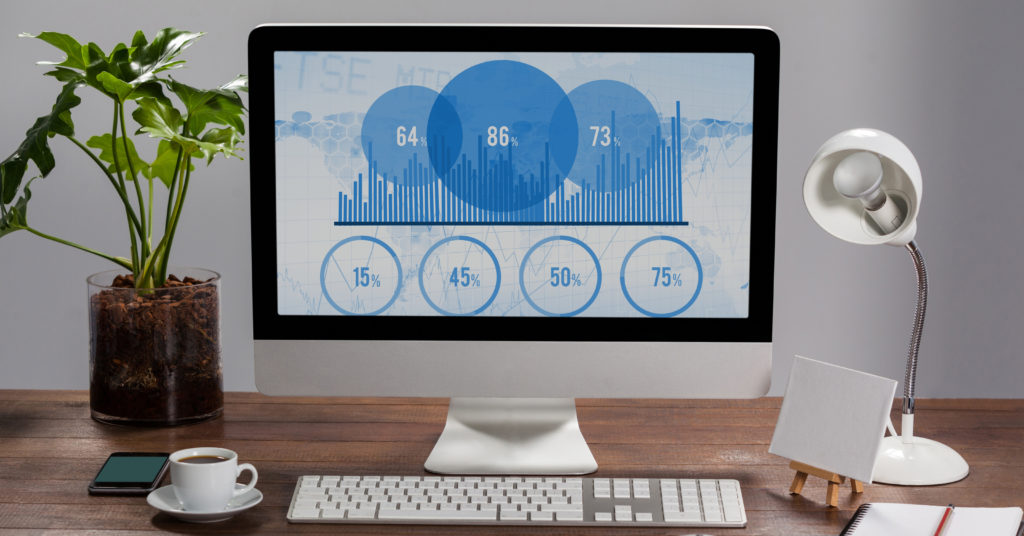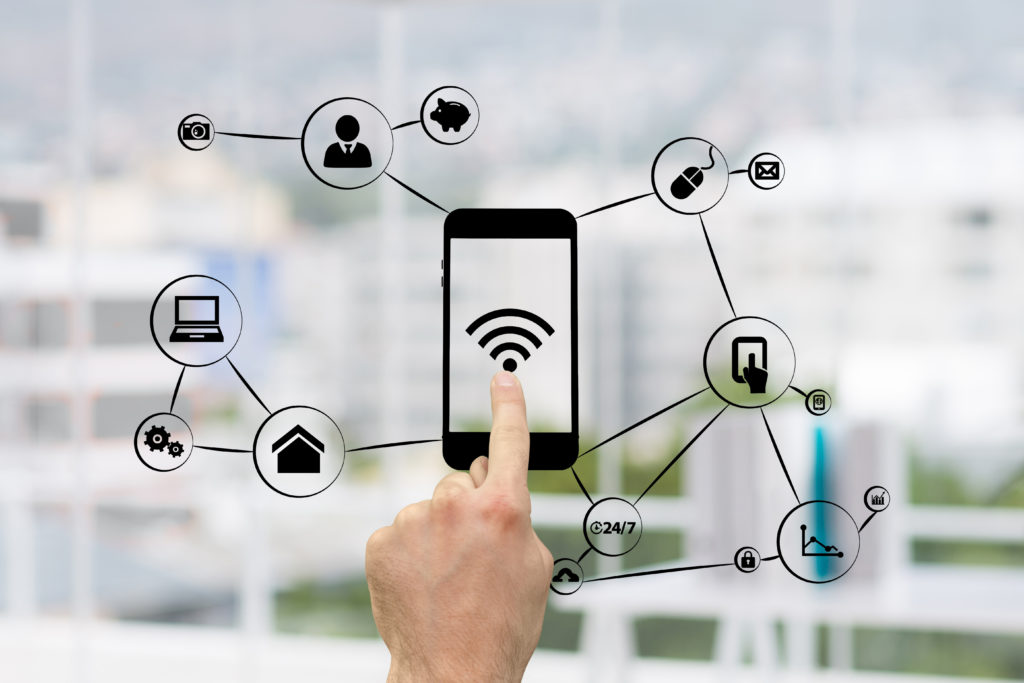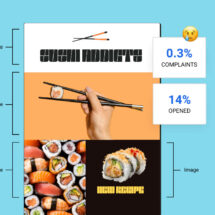8 Tips for Efficient B2B Email Marketing Campaigns
By Elisabeth Strasser November 23, 2021
Did you know, for every $1 spent on email, businesses see an average of $42 return. It’s even higher for B2B, that’s why marketers widely use it to nurture leads.
Like any other marketing technique, B2B email marketing has evolved with changes in the market and technology. To stay relevant and provide valuable content to your target audience that draws them in and entices them to take action, email marketers now use personalization, automation, and various metrics to improve their strategy.
We compiled eight tips to help create efficient B2B email marketing campaigns so your business can start to use email to grow.
1 – Develop your distribution lists

Before you start sending emails, segment your mailing list so you can send targeted offers to specific groups in your email list. But first, you need to understand your clients, and the best way to learn more about them is to do some research and define your customer profiles.
Talk to your target audience via surveys, polls, or interviews to find out about pain points and goals. Use data already available to you through Google Analytics to figure out demographics. Find out who the decision-makers are within each company and map out the buying process to gain a better understanding of prospective clients.
When you’re adding new contacts to your list, be sure to use a method where customers who just discovered you opt-in to get your newsletters. This is important, so you only have people on your list that actually want to hear from you.
2 – Start with a clean email list
If you have an existing list, perform a data cleanup to see how many contacts from your database are still valid. Use the new information from your customer profiling work to filter existing contacts for their relevance.
To improve your mailing list, look at quality rather than quantity. Check for inactive subscribers and try a re-engagement campaign to get them interested again. If that doesn’t work for your business, you should remove inactive subscribers.
It’s better to focus on subscribers that open emails and engage with your rather than wasting your efforts on those that don’t. This will also help to reduce spam complaints, as only customers your information is relevant to will get your emails.
3 – Personalize your campaigns

Once you’ve created your list, use tags to create segments. Tags are a simple way to identify a group of customers based on similar traits or information. You can then use those tags to send relevant content to specific groups of businesses on your mailing list.
Not only will segments aligned with customer profiles help you to send highly targeted messages, but you can also find out what the best sending times are.
Keep an eye on your metrics to tweak and fine-tune your segments. Use data to find out if you’re on the right track with the customer profiles you initially created or if you need to make adjustments.
After you send a few campaigns, consider engaging more with your most loyal business clients and providing some extra value to them. This is the highest form of personalization, as your selected audience recognizes the highly tailored content.
Even though your emails to different segments may vary, they should always have your unique value proposition at their core for a seamless customer experience with any of your other marketing channels.
4 – Use automation and grow
Implementing automation in B2B email marketing is the best way for marketers to offer an excellent and personalized customer experience at scale. Automation immediately makes your email arrive in their inbox at the right time and with minimal work.
When you set up email automation, your business can respond 24/7 without anyone having to write the response and click the send button. Set up your automated campaign in AWeber to trigger specific replies for specific situations your website visitors can take like downloading your how-to guide, signing up for a newsletter, or making a purchase.
This way, your thank you or follow-up emails are sent automatically to nurture the incoming leads. You can also set up email workflows that send helpful information or resources that show your expertise to attract your new business customer further to make a purchase from you.
Another great way to use automation in B2B email marketing is automatically sending an email when you publish your latest blog using an RSS feed.
If a weekly blog post is part of your calendar, this is the quickest way to let your list of subscribers know about fresh content.
5 – Provide valuable content

In the B2B market, products and services can be more complex than in B2C and a certain level of know-how is required to get email copy right for a specific industry.
Make sure you strike the balance between using the right terminologies but don’t fall into the trap of using too much jargon or unclear abbreviations. Remember that it’s still humans who receive and read your email.
According to the Content Marketing Institute, email newsletters are the most-used type of content marketing for 81% of marketers. This shows that email is still one of the most powerful tools to provide value to your clients.
It all starts with a personalized subject line and an engaging preheader that reels in your audience. For higher open and click-through rates, you need to provide value at the right time to respond to your target audience’s needs according to the stage in the buying process that they’re in.
- Are they just finding out about you? – Provide educational content.
- Are they looking for solutions? – Send content that provides answers on how your products or services can help.
- Are they trying to decide if your business is the right fit for them? – Offer information that supports the decision to proceed with a purchase and give credentials.
Keep the body copy of your email as brief as possible while still being informative. You can link to more information in the copy or via a call to action (CTA). It should also be easy to scan or read and guide towards a CTA button to make it easy for recipients to take action.
6 – Keep your design simple but eye-catching
Make sure you design your email in a simple but attractive way. Instead of shouting at your readers with flashing colors and too many emojis, apply visual hierarchy via the placement and size of your logo, banner image, and other images you use to support your copy.
Use high-quality and royalty-free stock photos to craft emails with an attractive design. Depending on the type of business, pristine office backgrounds, snapshots of tech, or images of a smiling group of people give your email newsletter a professional look and draw readers in to read your copy.
Don’t use too many images and find the right balance between copy and design. Email requires smaller file sizes to send without getting stuck in your outbox. AWeber recommends using a .jpg, .png, or .gif with a file size under 10MB and a maximum width of 1200 pixels.
Don’t forget to add alt text to your images. This will allow your readers to understand the image even if it doesn’t display correctly.
Just like websites, emails are increasingly viewed mainly on mobile devices, which means your design needs to be responsive.
7 – Test and pick the right time to send

Monitor your email marketing campaigns to find out when are the best times for you to send your content. A good time to test is at the start of business hours when employees usually check their inboxes first thing in the morning. Branch out from there and test different times in various time zones. Keep in mind many guides that say a certain day or time is the best time to send is true for their audience. It is up to you to test and verify it works for your audience.
Next to timing, you can also test different elements of the email itself. Depending on what you want to find out, you can apply A/B testing to investigate which call to action performs better, or which layout gets you more clicks if you move things around.
8 – Monitor campaign results
Once you’ve sent a few email marketing campaigns and done some A/B testing, it’s time to take a closer look at all metrics available to you.
Look at open and click-through rates to find commonalities between emails that have done well or that haven’t worked quite as you expected.
Compare emails with good results to the ones that were less successful. See if you can find the reasons why some emails performed better and try to replicate that in your next campaigns.
Continuous improvement should be an essential part of your strategy. Times change and your audience changes with it. To react to the latest developments quickly and stay relevant, keep an eye on analytics that can start showing trends early.
When you’re getting started setting up your B2B email marketing strategy, make sure you put the knowledge around your target audience at the top. Businesses, and the people behind it, expect a very different approach when you send your content than a B2C audience.
The core difference of the audience you’re targeting leads the way and is a big part of how you curate your distribution list, personalize your campaigns, and how you can provide the best possible value. Testing and monitoring your results helps to find out what performs well and how to tweak your B2B email marketing campaigns accordingly.

